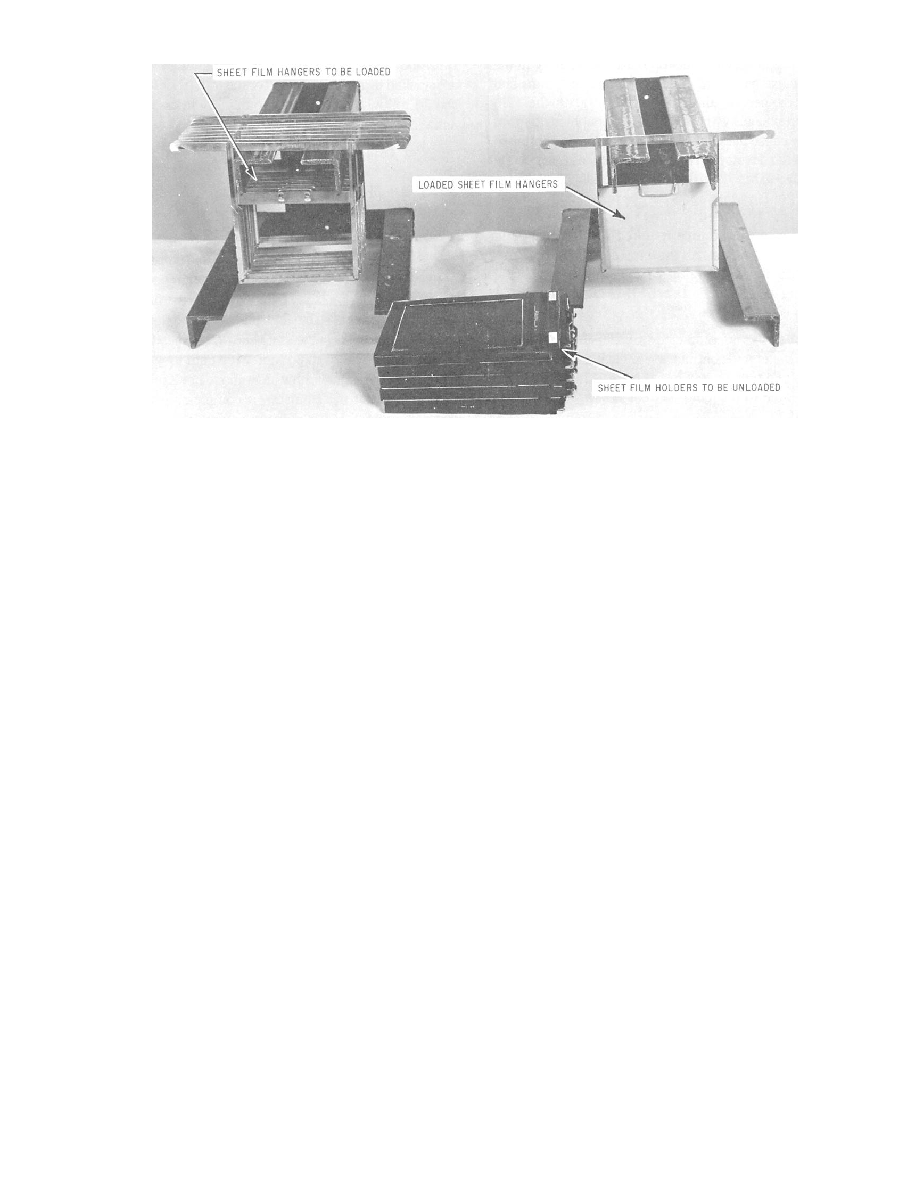
DOFMaster
for Windows
On-line
Depth of Field
Calculator
DOFMaster for Mobile Devices
On-line
Depth of Field
Table
Hyperfocal
Distance Chart
Articles
FAQ
Recommended
Books
Support
Contact
Links
Home
for Windows
On-line
Depth of Field
Calculator
DOFMaster for Mobile Devices
On-line
Depth of Field
Table
Hyperfocal
Distance Chart
Articles
FAQ
Recommended
Books
Support
Contact
Links
Home
As an Amazon Associate I earn from qualifying purchases.
![]()
the developer, and submerge them in the stop bath. Your
right hand should go into the stop bath with the first film
and stay there to handle each film as it is transferred from
the developer by your left hand. Use your left hand only
for transferring the film to avoid contamination of the
developer or spotting of the film. A few drops of
developer will not affect the stop bath or the fixing bath,
but a few drops of either of these solutions could rum a
developing solution.
individually to the fixing bath or hypo. Shift the films
several times in the fixing bath, agitating them
vigorously. Then safelights or the white lights may be
turned on. Continue shifting the films until they lose the
cloudy or creamy appearance. You must shift the films
several times during the second half of the fixing time,
but continuous agitation is not necessary.
unless a regular film washing tank or tray is used. The
negatives also may be put in regular film hangers for
washing.
sheet film. The solutions and the tanks are deep enough
to cover the films in the vertical position completely. The
films are supported individually in the tanks by the film
the films while in the solutions. The solutions used
should have good-keeping qualities, and they should be
the type that can be replenished by adding fresh solution
or replenisher, so the volume in the tanks can be
maintained at the proper working level.
However, when a predevelopment rinse is used, four
tanks are needed.
the prescribed processing temperature. Again the
Basic Photography Course

As an Amazon Associate I earn from qualifying purchases.
WWW.DOFMASTER.COM
© 2006 Don Fleming. All rights reserved.
© 2006 Don Fleming. All rights reserved.